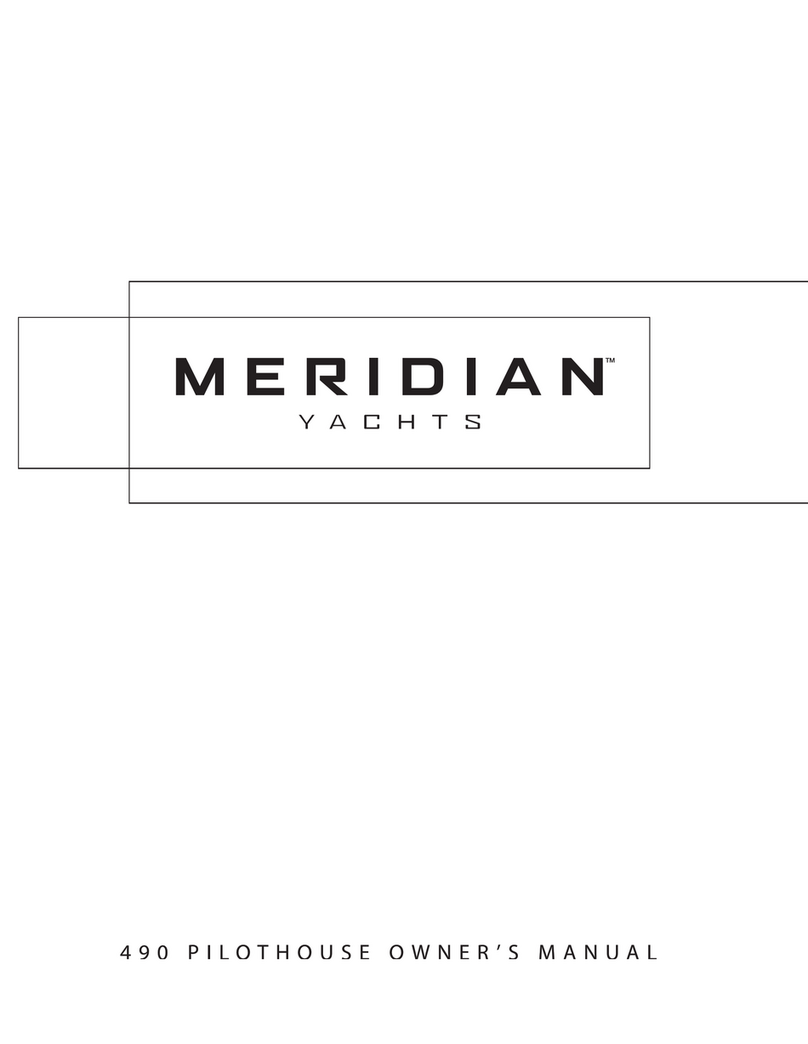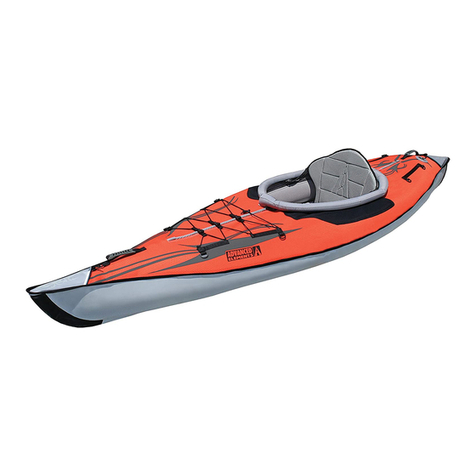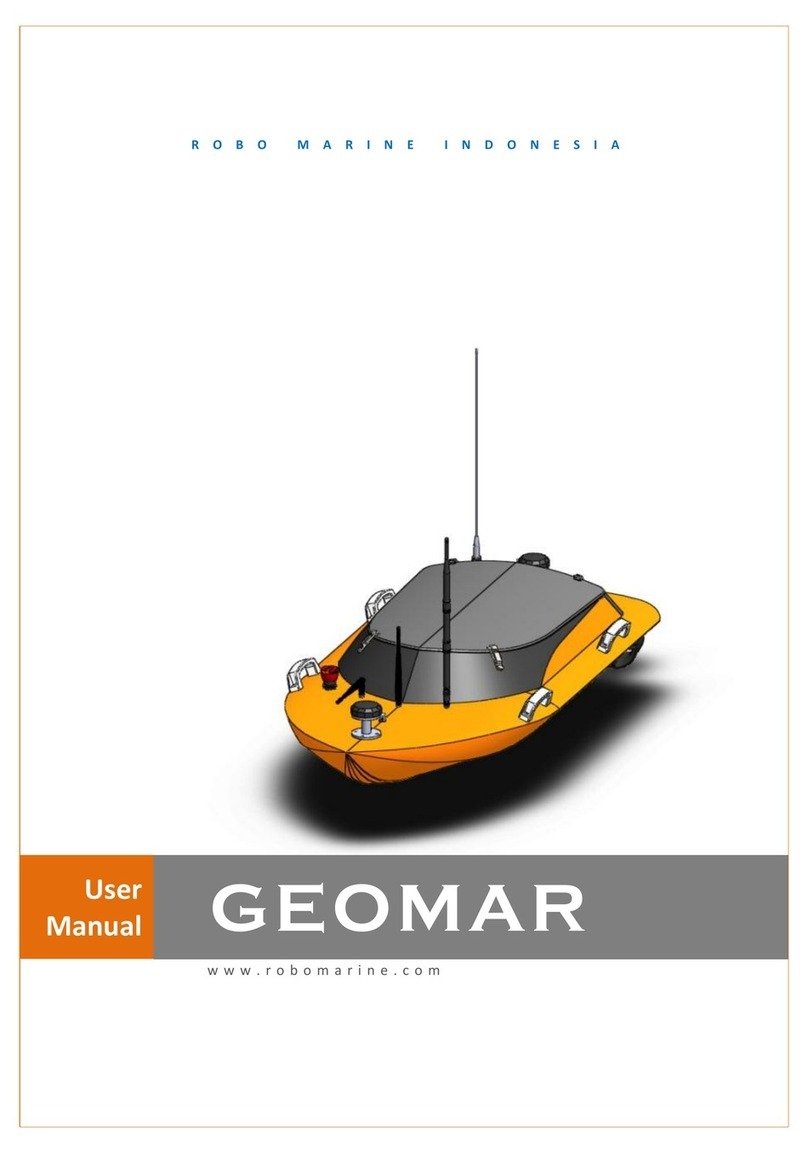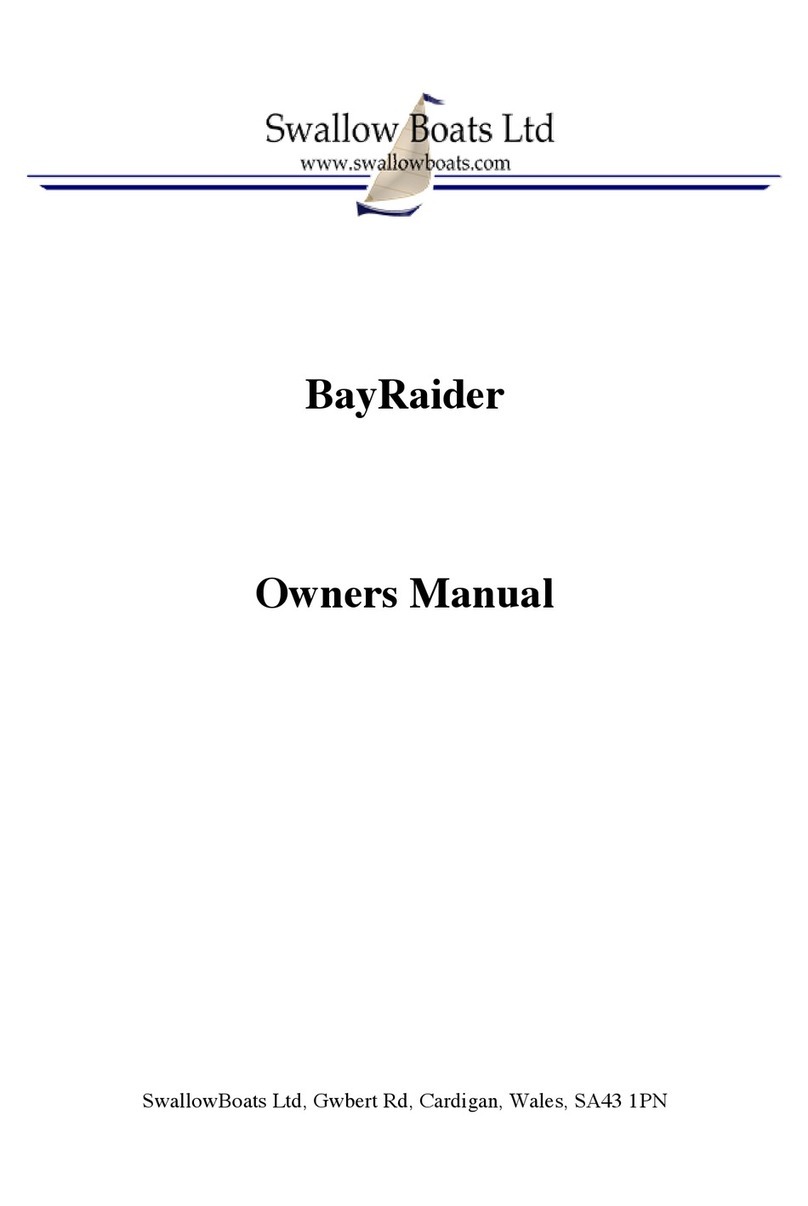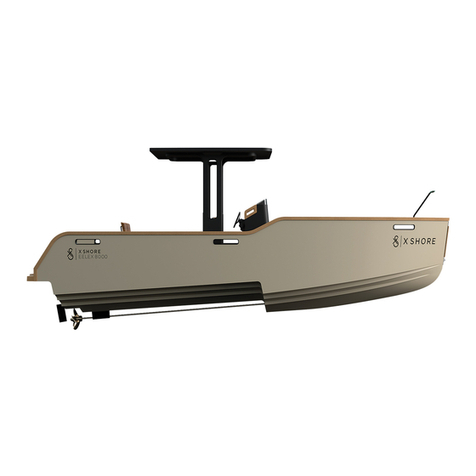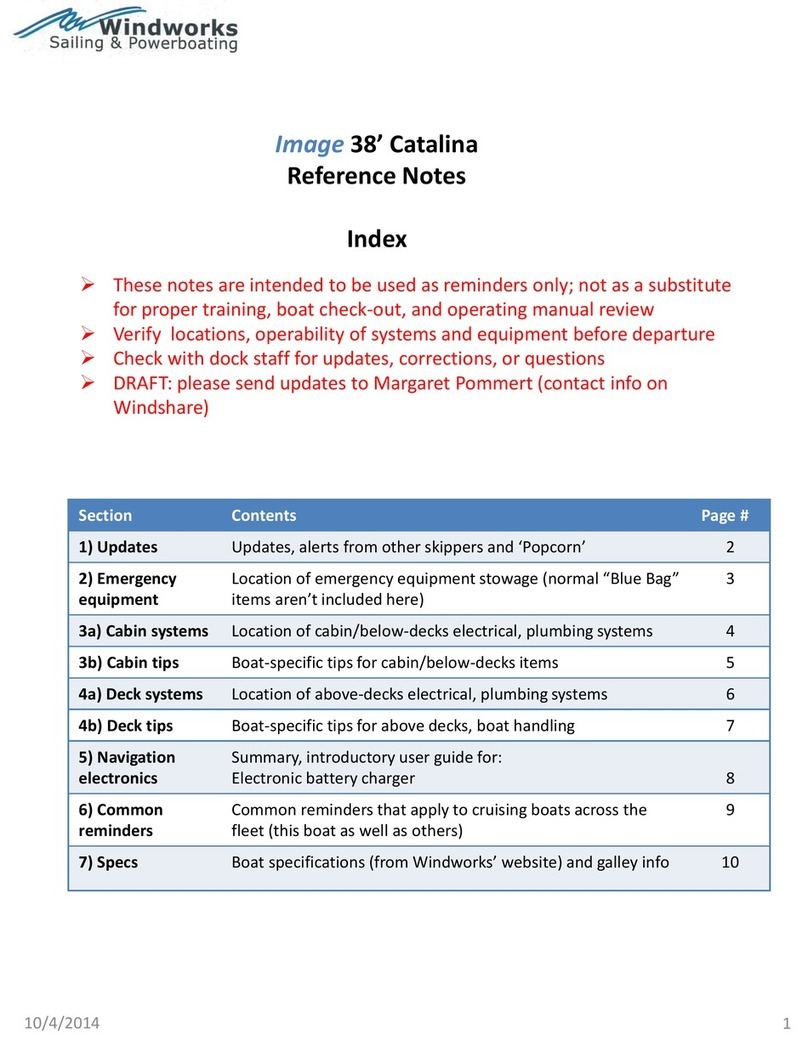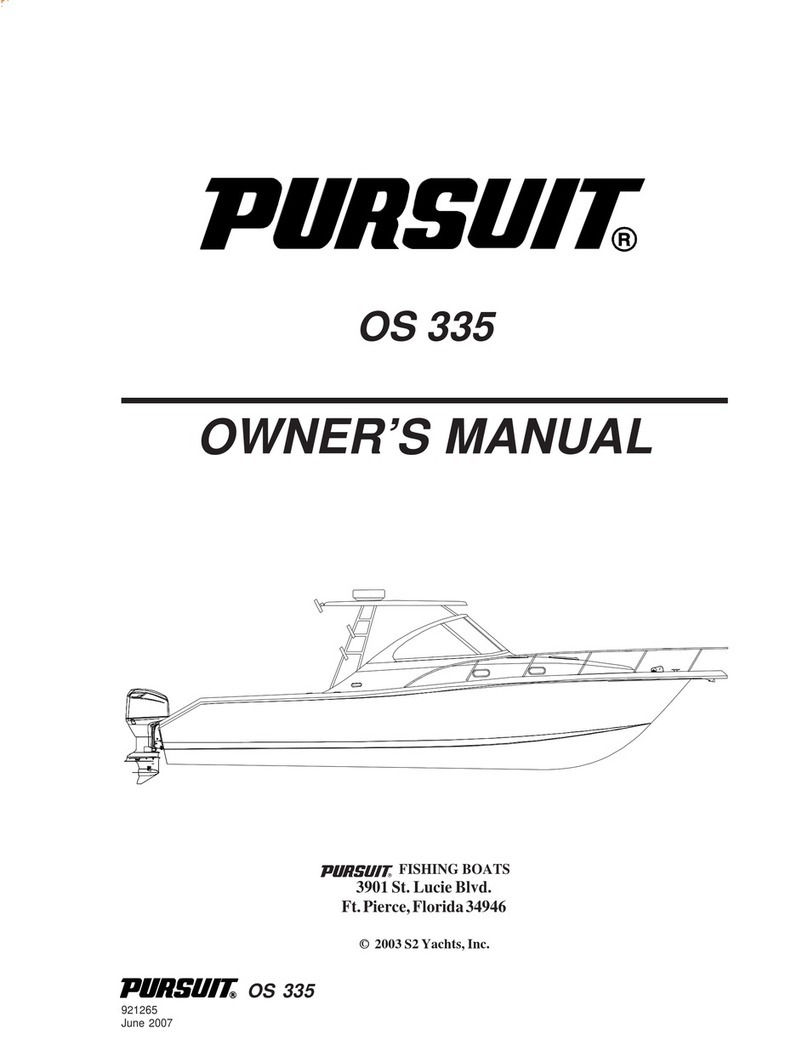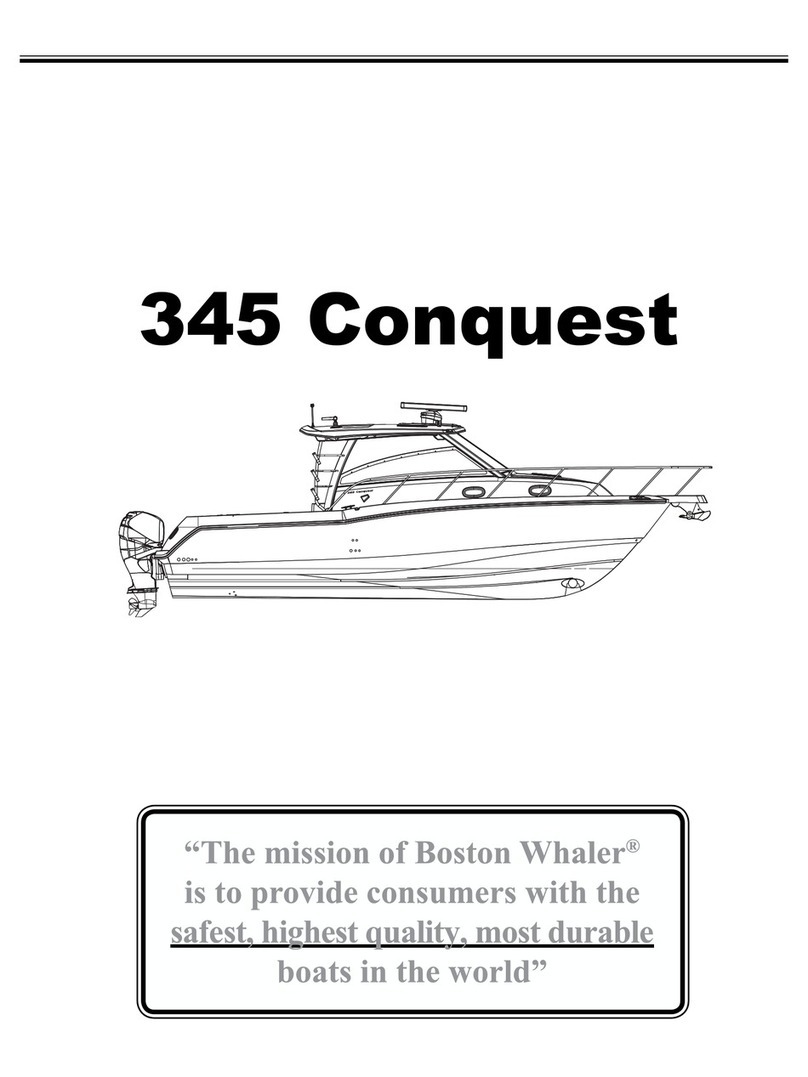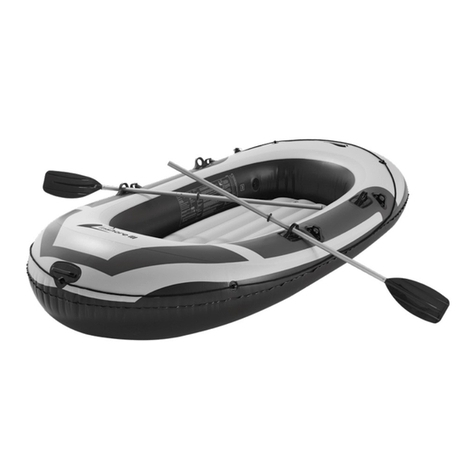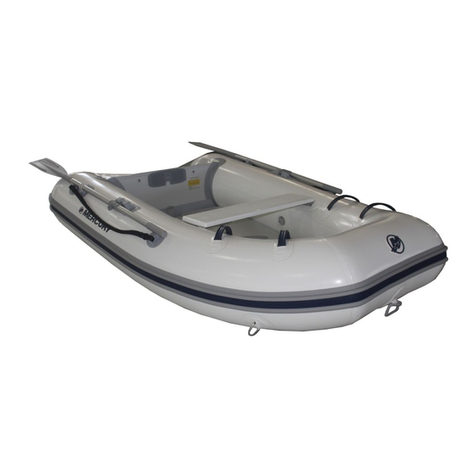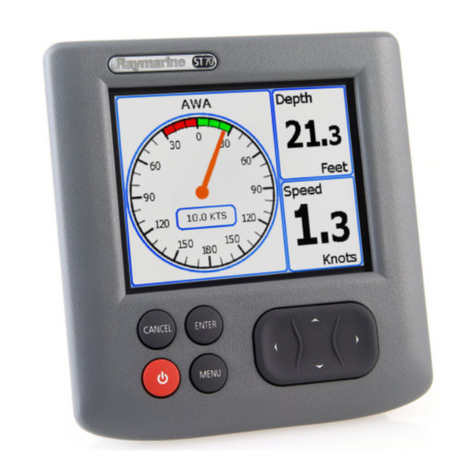
Gemini 105Mc Owner’s Manual
6Copyright © 2004 Performance Cruising Inc.
nected to either shore power or propane. The unit
will prefer electric power if connected. Otherwise,
the refrigerator will use propane and light itself auto-
matically. To use the refrigerator on shore power,
turn the refrigerator breaker on the shore power
panel to “On”. Also, turn the Refrigerator breaker on
the 12 volt panel to “On”. The 12 volt breaker oper-
ates the cooling fan and lighter. To use the refrigera-
tor on propane, turn the shore power refrigerator
breaker to “Off” and select “Propane” on the refrig-
erator control panel. You may hear the unit click
several times as it attempts to light itself. Be sure
that the propane bottle is open and that propane is
getting to the unit. If the refrigerator is not success-
ful in lighting itself, the “Check” light indicator will
come on. In most cases, turning the unit “Off” and
then back on will reinitiate the automatic lighting
procedure and the unit will operate normally.
As the refrigerator operates completely silently, the
means by which to tell if it is operating correctly
(besides the interior getting cold) is to feel the chim-
ney flashing on the back of the refrigerator. The
chimney is accessible through the refrigerator ventila-
tion hatch in the cockpit.
Hot Water Heater
The hot water heater is a six-gallon tank stored in
front of the water tank under the bunk in the port aft
cabin.
When the engine is running, a heat exchanger coil
coming from the engine heats the water in the heater
tank. There is a red handled valve in the front end of
the engine compartment that is used to shut off the
hot water going to the water heater tank. When the
handle is pointing down, the engine is not heating the
water. When the handle is horizontal, the water in
the tank is being heated.
When on shore power, a switch on the main 110V
panel turns on a 110V electric element in the tank,
which heats the water.
Caution: Do not operate the hot water heater on 110v
without water in the heater tank—otherwise you will
likely burn out the heating element. To fill the heater
tank, turn on a hot water faucet until water comes
out, indicating the tank is full. Just as important is to
make sure you do not run out of water in your 30 gal-
lon tanks resulting in an empty hot water tank.
Toilet
There is a ¾” inlet and a 1 1/2” outlet seacock be-
hind and below the toilet. With the handle to the
left, the ¾” inlet seacock is allowing water in from
the sea. With it coming straight out it is closed and
with the handle pointing to the right it is allowing
fresh water to be pumped into the toilet from the
sink. Pumping fresh water into the toilet is to pre-
vent odor from the bacteria in seawater when the
toilet is left for any length of time.
There is a 3-way seacock located in a cabinet just
outside the head, opposite the navigation station.
This seacock controls the drain from the sink and has
three positions: Off, Overboard, and “Fresh Water
Flush.” In order to pump fresh water from the sink
into the toilet: fill the sink with water, turn the sea-
cock to “fresh water flush,” and pump the toilet flush
handle until all the water from the sink has been
sent through the system. You can add a small amount
of bleach to the water to further clean the lines out.
The Y valves behind the toilet directs the toilet wa-
ter either overboard or into the holding tank. (The
long end of the handle points to the hose in use; i.e.
pointing right pumps overboard and pointing left
pumps into the 18 gallon holding tank).
Turn the dial on top of toilet counterclockwise to
flush the toilet or clockwise to close the incoming
water and pump the toilet dry.
Caution: When sailing in rough weather, close this
dial to stop water from flooding back into the toilet
and flooding the boat.
The deck pump out is on the side of the foredeck
next to the sail locker.
Centerboards
The centerboards are located within a case in each
hull. A winch handle in the socket lowers and raises
the centerboard. The centerboard is locked into posi-
tion with a wing nut going over the 3/4" nut.
Releasing the wing nut and turning the socket ap-
proximately two turns counterclockwise will fully
lower the centerboard (it should not be lowered too
much). Tightening the wing nut will lock the board
down.
Raising the board is simply reversing the procedure.
Turn clockwise two turns until the board comes in
contact with the top of the case. Be careful when
unlocking the board from the down position as the
board is very buoyant and will begin to lift up quickly.
The board will float if left unlocked in the up posi-
tion but the back of the board will still be hanging 9"
down out of the hull if not locked up. Therefore,
after raising the board, be sure to tighten the wing
nut with the board fully raised.
The boards are designed to push up if run aground.
The boards are only necessary for windward work or
when close maneuvering in a marina. Only the lee-
ward board is necessary but it is acceptable if both
are used. If traversing a narrow area, put both down 1
Gemini Quick Start Guide

